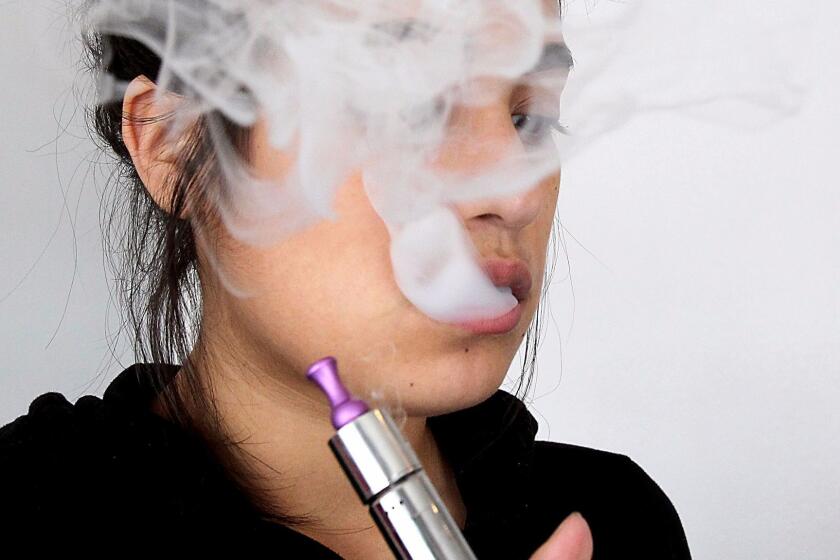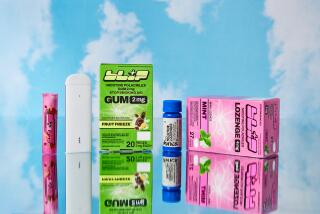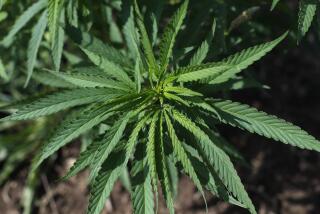The FDA tried to ban flavors years before the vaping outbreak. Top Obama officials rejected the plan
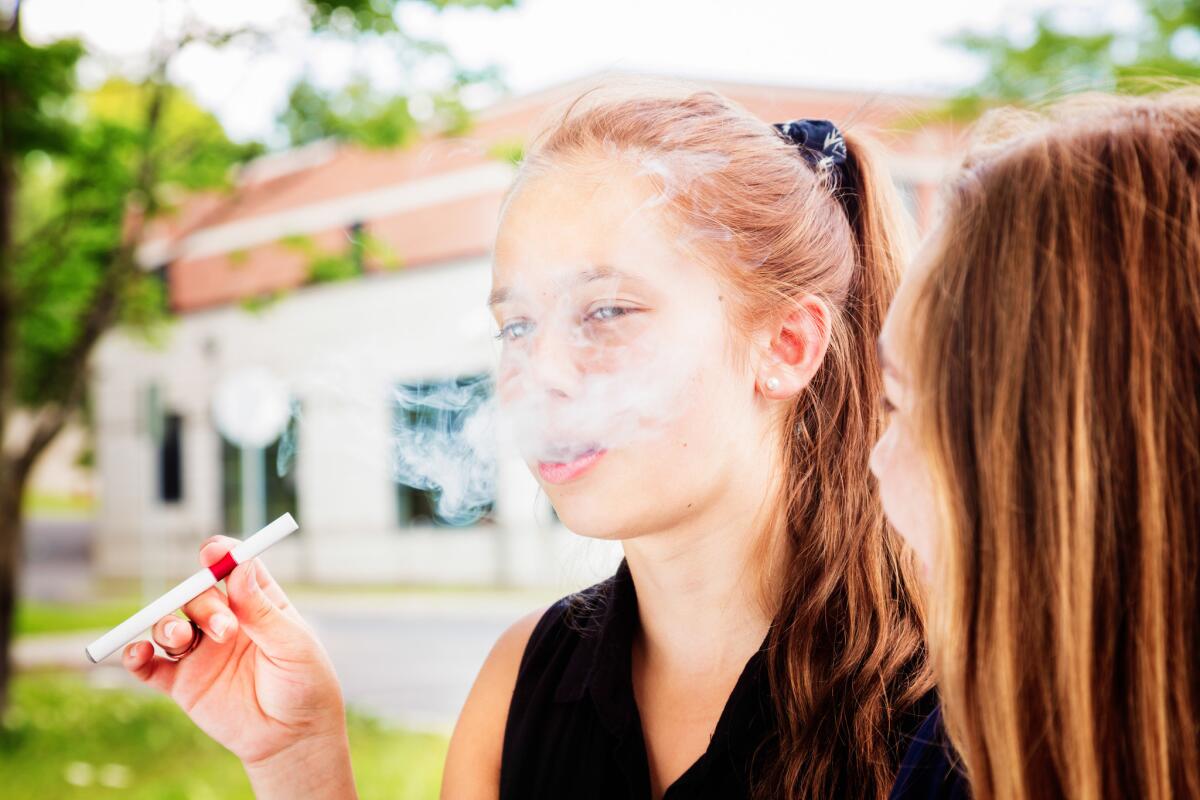
Unicorn Vomit. Cotton Candy. Gummy Bear. Skittles.
Some teenagers who tried these playful vaping flavors thought they were just inhaling water vapor — not also nicotine, a chemical considered as addictive as heroin and cocaine.
Now, as a mysterious vaping-related lung disease has doctors and parents urging the nation’s 3.6 million young users to quit, many are finding that they physically can’t — they’re hooked. It’s exactly the kind of youth addiction crisis the Food and Drug Administration had warned of four years ago, when it tried to ban flavored fluids for e-cigarettes.
If the FDA ban had gone through, the kid-friendly vaping liquids would have been pushed off store shelves.
Instead, over the course of 46 days, a deluge of more than 100 tobacco industry lobbyists and small business advocates met with White House officials as they weighed whether to include the ban as part of a new tobacco control rule.
The end result: Senior Obama administration officials nixed the ban and much of the evidence supporting it, according to documents reviewed by the Los Angeles Times.
The officials told The Times that a cost-benefit analysis suggested the economic burden on vape shops appeared to outweigh potential health benefits of the ban.
After the rules took effect in 2016, sales for Juul, the most popular e-cigarettes, skyrocketed by more than sixfold, reversing decades of progress on youth smoking.
By 2018, about 4.9 million middle and high school students were using tobacco products, up from 3.6 million the prior year, according to the Centers for Disease Control and Prevention.
Desmond Jenson, an attorney focused on tobacco policy at the Public Health Law Center, saw the decision as one that would lead to lifelong youth addiction and regret: “This was the moment we’d go back to in a time machine — the moment we could have nipped this disaster in the bud.”
* * *
The Los Angeles Times reviewed a 575-page draft of the FDA’s tobacco rule, along with thousands of pages of memorandums, survey results and presentations prepared by lobbyists and advocates who met with White House officials in the days leading up to the elimination of the ban. The Times also analyzed a database of meetings with those officials from November 2015 to February 2016. Here’s what the records showed:
Prior to the meetings, in 2013, experts were already worried — the Centers for Disease Control and Prevention reported that the percentage of middle and high school students who used e-cigarettes had more than doubled in one year. The surgeon general warned that tobacco companies were known to use fruity flavors to hook children, ensuring decades of product demand.
By 2014, the CDC reported that, in just three years, vaping in middle and high schools had increased by nearly 800%. A national survey by the FDA and National Institutes of Health asked young people who vaped why they did it. More than 80% marked the answer: “It comes in flavors I like.”
FDA documents given to White House officials ahead of their deliberations suggested that was no coincidence. The flavor ingredients in some tobacco were the same as those in Kool-Aid, Jolly Ranchers and Life Savers. “The chemicals largely overlapped with similarly labeled ‘cherry,’ ‘grape,’ ‘apple,’ ‘peach,’ and ‘berry’ tobacco products,” the FDA wrote.
Some e-liquid flavors were found to be poisonous in high doses, according to the FDA. Studies showed that several cinnamon-flavored e-liquids contained cinnamaldehyde, a chemical that experts at the FDA called “highly toxic to human cells.” And some cotton candy and bubble gum flavors contained aldehydes, a class of chemicals that can cause airway constriction.
The FDA was already preparing a so-called “deeming rule,” which brought new products like e-cigarettes under the agency’s jurisdiction. A draft of the rule shows that the agency planned to use the opportunity to take a bold stance against flavors.
“Given the attractiveness of flavors, especially to youth and young adults, and the impact flavored tobacco products may have on youth initiation,” a draft of the rule read in October 2015, any flavored e-cigarette fluid would have been removed from the market within 90 days of when the rule took effect. That would have been November 2016.
Electronic cigarettes have all the addictive potential of traditional tobacco products, and health officials should do all they can to keep them out of the hands of teens and young adults, according to the federal government’s first comprehensive review of e-cigarettes.
The ban gained widespread support from scientists and public health experts and, on Oct. 19, 2015, headed to the White House for approval.
On Nov. 3, the Office of Management and Budget, or OMB — tasked with evaluating the economic impact of major rules — took its first meeting with a critic of the ban: Schell Hammel, the owner of the Vapor Bar, a flavored e-liquid shop, including its premium vaping line — called “Forbidden.”
Dillon Taylor, then a lawyer at the Small Business Administration, accompanied Hammel. Taylor had submitted public comments that opposed the rule in 2014, calling it “disproportionately burdensome to small entities.” This was his first of more than 45 meetings at OMB over just seven weeks.
In that time, OMB hosted more than 100 advocates battling the tobacco rule: At least 44 meetings were with bands of industry representatives. About seven were with public health experts.
On Nov. 13, Andrew Perraut, a former OMB policy analyst who had helped prepare the proposed rule the previous year, arrived at an OMB meeting. It was the first of several meetings at which he represented tobacco companies such as Njoy, arguing that the FDA needed more “rational, evidence-based policymaking” so that a flavor ban wouldn’t affect adults who wanted to quit smoking.
The chief flavorist for Purilum, an e-liquid company, came the following week with photographs depicting the “Future of Flavor” — glossy laboratories with chemists in face masks.
On the 19th, an industry-tied think tank delivered an 82-page stack of data aiming to debunk FDA research: One experiment forced rats to inhale nicotine in a chamber for almost two years. (The rats lost weight but didn’t die.) Another, called “Keep Calm It’s Only Poison,” indicated that the dramatic uptick in e-liquid calls to poison control centers was still only a small proportion of all calls.
Altria, the tobacco giant behind the verbatim text of Rep. Tom Cole’s industry-friendly bill, sent four representatives to an OMB meeting two days before Thanksgiving. A representative from the National Tobacco Co., which endorsed Altria’s draft legislation, visited soon after.
There were no meetings for three days around Thanksgiving.
In the first weeks of December, the number of visitors picked up. Some meetings included more than 16 tobacco advocates around the table at once: Molecule Labs; Mid Cities Vapor; VapeNY; and Vape A Vet, for retired service members, among others.
Cuttwood Vapors in Irvine, Calif., brought an article calling the proposed rule an economic “vapocalypse.”
Vapor Shark in Miami Lakes, Fla., presented a document with a photograph of picket signs: “I vape. I vote.”
Three days before the final meeting of the year, Carl Phillips, chief scientific officer of the Consumer Advocates for Smoke-Free Alternatives Assn., arrived bearing something of a closing argument: an 8,790-page packet of public testimonials and a 57-page personal memorandum that called the potential e-cigarette policy “an unmitigated disaster.”
“There is a persistent mythology, driven only by fact-free propaganda, that interesting flavors are designed to attract children to e-cigarettes,” Phillips wrote. “The proposed rule imposes a draconian intervention in the vibrant and beneficial free market for e-cigarettes.”
Besides, he added, “the net health effects of nicotine are very close to zero.”
* * *
In early 2016, Perraut returned to an OMB meeting a final time. Cecilia Muñoz, then a senior official heading the White House’s Domestic Policy Council, met with tobacco representatives, then privately with two senators.
Then, the meetings stopped.
For 88 days — from early February through early May — there were no public meetings logged about the rule.
Then, on May 10, 2016, the rule was published, establishing FDA oversight of e-cigarettes. The flavor ban was missing. So were more than 15 pages of evidence detailing the role that flavors were expected to play in the youth vaping upsurge.
The FDA, the rule said, was seeking “further data on the role of flavored products in youth initiation.”
“You look at these enormous chunks crossed out, and think, ‘How could this possibly have seemed good for public health?’ ” said Eric Lindblom, a former official in the FDA’s Center for Tobacco Products, who now leads tobacco work at Georgetown Law’s O’Neill Institute.
“It’s as if they looked at each other and said, ‘If we’re not going to do anything about this problem, let’s delete anything that suggests we should.’ It’s a horror story,” he said.
That August, when the rule went into effect, teenagers returned to school, and Juul catapulted to success, with brick-and-mortar sales skyrocketing more than 640% in one year. Altria, the company that lobbied the White House, went on to purchase a 35% stake in the company. Perraut, the former OMB staffer, became a public policy director for Juul, according to his LinkedIn page.
There are now more than 10,000 vaping flavors.
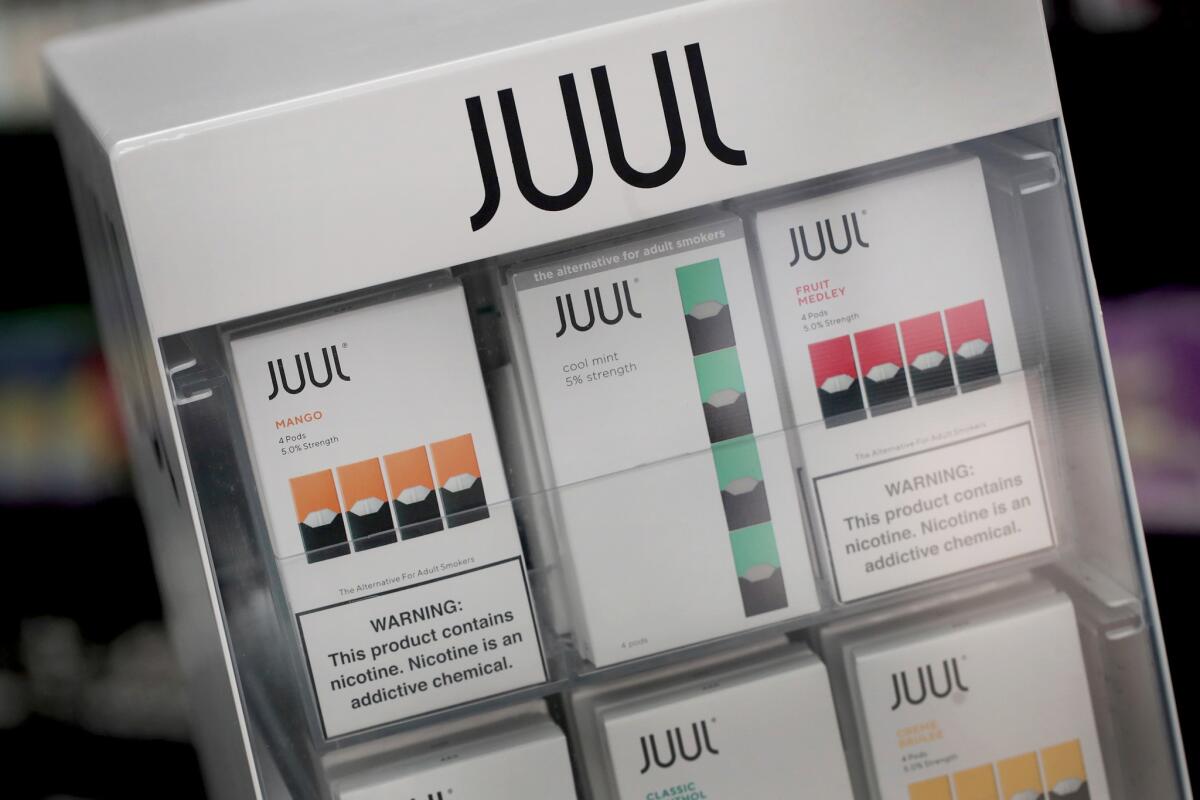
Muñoz told The Times recently that she remembered the decision as a collaborative one between the FDA and OMB. But she also said the FDA had “struggled mightily” with assessing the economic implications of enforcing such a restriction.
“We had deep respect for the science-based agencies. In this case, the science wasn’t clear,” she said, explaining that flavors were the lifeblood of e-cigarette sales. “The question was: Is it reasonable to effectively shut down all of these vape shops and businesses when the benefits and harms were still inconclusive?”
Stephanie Caccomo, a press officer at the FDA, said the agency does not comment on changes made during the federal rule-making review process but that the FDA intended to finalize a compliance policy in the coming weeks “to clear the market of unauthorized, kid-appealing flavored e-cigarette products.”
“We have consistently said that if the disturbing rise in youth e-cigarette use continues, especially through the use of flavors that appeal to kids, we’ll take the necessary actions to keep all nicotine products out of the hands of children,” she added.
Four former OMB officials who partook in the industry meetings declined to comment on the decision: Shaun Donovan, who headed OMB at the time; Howard Shelanski, then administrator of OMB’s regulatory division; Allison Orris, then the associate administrator of the division; and Stephanie Mok, who managed a portfolio of health and science regulations there.
Executives at VapeNY, Mid Cities Vapor and CASAA told The Times they still don’t support flavor restrictions. Altria and Cuttwood Vapors declined to comment on the matter. Some vape shops who visited OMB have since closed down. All others did not respond to calls from The Times.
The CDC says the mysterious lung disease appears to be linked to vaping THC, the chemical in marijuana that produces a high. The outbreak has sickened 805 people and caused 12 deaths so far.
But the eventual death toll undoubtedly will be much higher among the one in four teenagers who now use devices like Juul, which distills 20 cigarettes’ worth of nicotine into one palatable pod. Regular vaping is linked to heightened risks of heart attacks, seizures, burns — and, for hundreds of thousands, an eventual switch to traditional cigarettes and their well-known health dangers.
Scientists expect more than 1.5 million years of human life to be lost.
“Flavored products have fueled this entire epidemic,” said Matthew L. Myers, president of the Campaign for Tobacco-Free Kids. “The failure to ban these egregious flavors more than three years ago literally opened the door to what was an entirely preventable explosion in youth addiction.”
“There is a direct causal link between this regulatory failure and the crisis we face,” he added.
Times staff writer Ryan Menezes contributed to this report.
More to Read
Get the L.A. Times Politics newsletter
Deeply reported insights into legislation, politics and policy from Sacramento, Washington and beyond. In your inbox three times per week.
You may occasionally receive promotional content from the Los Angeles Times.

